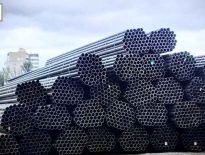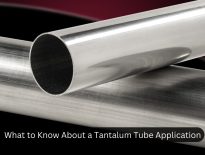If you are considering buying a new SA214 heat exchanger tube for industrial use, it is essential to learn more about its components. One will want to pay attention to the coating, service maintenance, and cost, among other factors. Explained below are the necessary points to consider.
Choosing between Seamless or ERW Carbon Steel Tubes
If you are looking for a reliable source of heat exchanger tubes for your process industry, you can count on ERW or seamless carbon steel pipes. Both types of SA214 Heat Exchanger Tubes have different applications. ERW is a type of pipe with welded joints on its sides, while seamless is free of seams. The manufacturing process of both types of tubes is different. Consequently, the performance of each kind of tube depends on the initial quality of raw materials.
As the name implies, seamless tubes are produced using round steel billets. These are purchased from local suppliers and are then pushed over a form until a hollow shape is achieved. They are then extruded into the desired length. On the other hand, ERW pipes are manufactured by rolling metal and longitudinally welding. They are generally used for liquid delivery, water, and oil transfer, and other similar functions.
Benefits and Uses
Sa214 heat exchanger tubes are used in a variety of industrial processes. They can be furnished bare or with capped ends. The tubing is resistance welded. It is manufactured from carbon steel. As an alternative, some manufacturers specialize in exotic or solid alloy construction. These materials are available in various shapes, sizes, and grades.
Heat transfer tubes are effective in applications where fluids have a high viscosity. These pipes are commonly used in chemical and petroleum applications but can also be used in other fields.
Several factors can influence the cost of a shell-and-tube heat exchanger. For example, the tube’s wall thickness affects the whole unit’s price. Also, the size of the exchanger, including the diameter and thickness of the shell, can play a significant role.
Maintaining SA Heat Exchanger Tubes
Using a heat exchanger, you must perform proper service maintenance to ensure maximum efficiency and performance. Inefficient heat transfer can cause an increased expense and result in equipment failure. It is essential to clean and inspect your heat exchanger for fouling and leaks.
Fouling is a build-up of solid material inside a pipe. The build-up of fouling can reduce the transfer of heat energy between fluids, reducing the heat transfer coefficient. Other factors that affect the performance of your heat exchanger are scaling, precipitation products, and biological fouling.
Fluids can also transport fouling. An inefficient heat-transfer system can cause production loss, depreciation on capital equipment, and increased downtime. A properly maintained system can reduce these costs and increase the feed output of your process.
Importance of Coating Heat Exchanger Tubes
One of the main reasons heat exchangers experience fouling is the nature of the crude and hydrocarbon services they receive. Coating SA214 Heat Exchanger Tubes is essential for several reasons.
- Corrosion resistance: Coating the tubes provide a barrier against corrosive substances, such as acids and salts, that can cause damage to the tubes over time. This process helps extend the heat exchanger’s life and reduce maintenance costs.
- Improved thermal efficiency: Certain coatings, such as aluminium silicate, can improve the thermal efficiency of the heat exchanger by reducing heat loss through the tubes.
- Protection during installation and operation: Coating the tubes provides an additional layer of protection during installation and operation, helping to prevent damage from handling or mechanical stress.
- Easy Cleaning: Some coatings make cleaning the heat exchanger tubes easy.
- Enhanced durability: Coating the tubes makes them more durable and resistant to wear and tear, helping to ensure that the heat exchanger continues to function effectively over time.
- Cost-effective: Coating heat exchanger tubes is a cost-effective solution to prolong the equipment’s life and reduce maintenance costs.
Overall, coating heat exchanger tubes is essential in protecting the equipment and ensuring its longevity and efficiency. It can help prevent damage, improve thermal efficiency and make cleaning easy.


